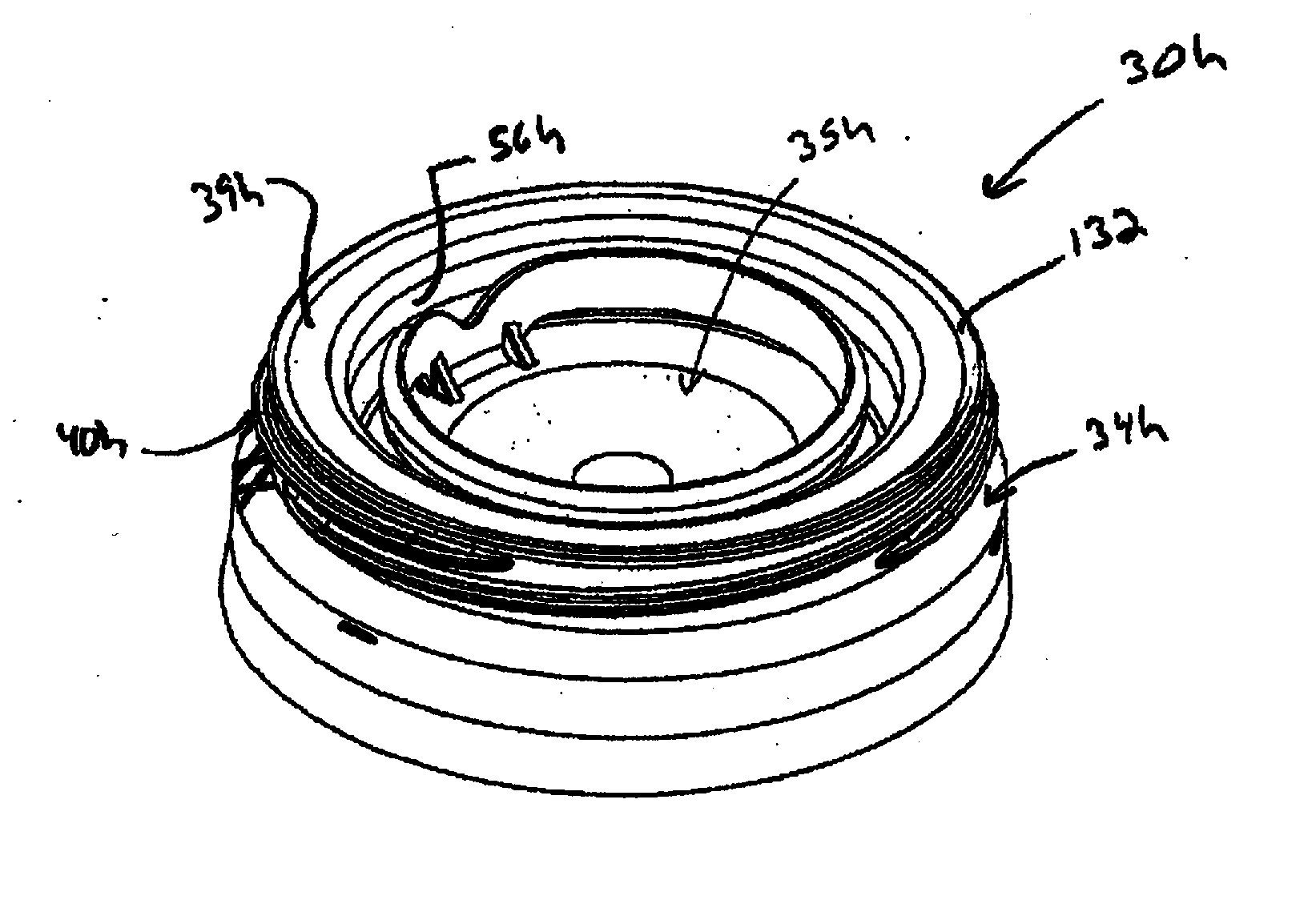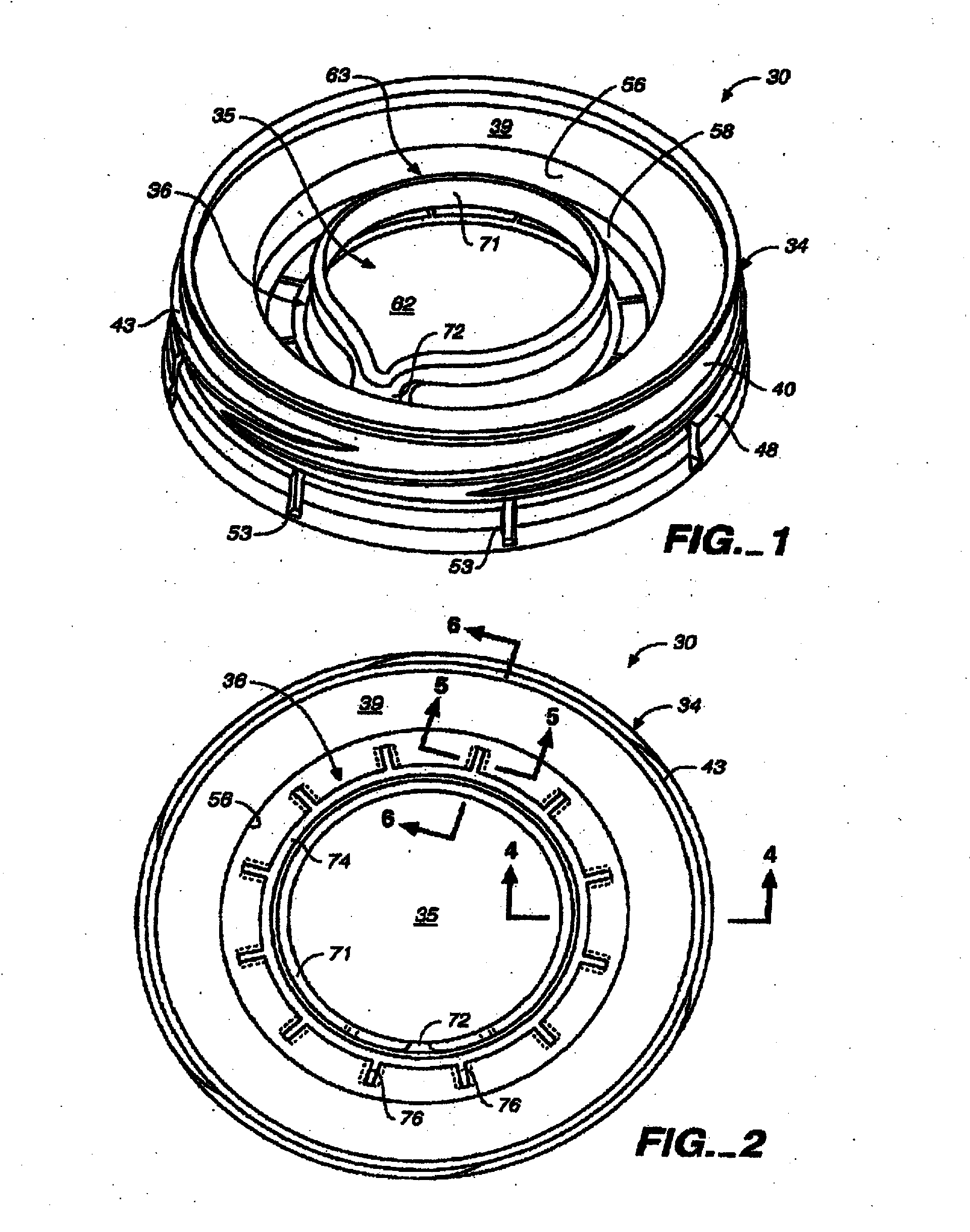Design and manufacture of removable membrane sealing components for consumer packaging
a technology of consumer packaging and sealing components, which is applied in the direction of sealing, caps, applications, etc., can solve the problems of limiting material choices, affecting the integrity and conflicting mechanical characteristics of the bridge during application
- Summary
- Abstract
- Description
- Claims
- Application Information
AI Technical Summary
Benefits of technology
Problems solved by technology
Method used
Image
Examples
Embodiment Construction
[0100] Reference will now be made in detail to the preferred embodiments of the invention, examples of which are illustrated in the accompanying drawings. While the invention will be described in conjunction with the preferred embodiments, it will be understood that they are not intended to limit the invention to those embodiments. On the contrary, the invention is intended to cover alternatives, modifications and equivalents, which may be included within the spirit and scope of the invention as defined by the appended claims.
[0101] Turning now to the drawings, wherein like components are designated by like reference numerals throughout the various figures, attention is directed to FIGS. 1-6 which illustrate a tamper-evidencing closure system, generally designated 30, which is adapted to be secured to a container (e.g., container 31a shown in FIG. 10).
[0102] As shown in FIG. 1, closure system 30 includes a closure base 34 that is adapted for mounting on the container, a sealing me...
PUM
| Property | Measurement | Unit |
|---|---|---|
| perimeter | aaaaa | aaaaa |
| thickness | aaaaa | aaaaa |
| inner diameter | aaaaa | aaaaa |
Abstract
Description
Claims
Application Information
 Login to View More
Login to View More - R&D
- Intellectual Property
- Life Sciences
- Materials
- Tech Scout
- Unparalleled Data Quality
- Higher Quality Content
- 60% Fewer Hallucinations
Browse by: Latest US Patents, China's latest patents, Technical Efficacy Thesaurus, Application Domain, Technology Topic, Popular Technical Reports.
© 2025 PatSnap. All rights reserved.Legal|Privacy policy|Modern Slavery Act Transparency Statement|Sitemap|About US| Contact US: help@patsnap.com



